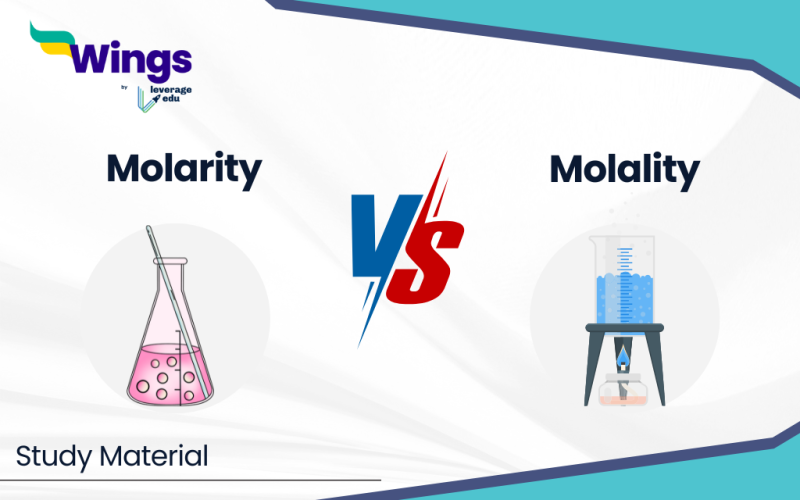Relationship Between Molarity and Molality: The terms “molarity” and “molality” describe a solution’s concentration. The concentration of the solute in the solution is determined by its amount. The quantity of solute in moles per litre of solution is known as molarity or molar concentration. In contrast, the quantity of solute in one kilogramme of solvent is known as molarity. Whether a solution is concentrated or diluted, its strength can be quantitatively expressed using molarity and molality.
- Concentration is measured in moles per unit volume or molarity.
- Concentration is measured in moles per unit mass or morality.
Table of Contents [show]
Relationship Between Molarity and Molality
Molality and molarity are two extremely helpful terms for concentration. To convert one to the other, they may also be connected to the density of the solution. The relationship is provided below.
Assume, the given solute has a mass of W1g =
.
The solute’s molar mass .
Let’s assume that the solvent is weighed .
Now, volume of the prepared solution to be .
We know,
According to the above formula, molarity equals
Similarly,
From equation (2) we get
……………(4)
From equation (3) we get
Density,
Now,
Multiply and divide by 1000 x on both the numerator and denominator of
Substituting the value of and of V from equation (4) in the density formula, we get,
Density of solution ()
Also Read: What is the Difference Between Resistance and Impedance?
What is Molarity?
Molarity is the molar concentration of a solution. It is the proportion of solute moles to solution volume expressed in litres. M is used to indicate it. Molarity is a temperature-dependent term because the volume of the solution changes as the temperature does. The following formula is used to determine molarity:
| Molarity = Moles of Solute/ Liters of Solution |
What is Molality?
Molality is the quantity of a solute in moles per kilogramme of the solvent. The molal concentration is the name given to it. Molality has the symbol m. Because the weight of the solvent remains constant regardless of temperature changes, molality is a temperature-independent term. The molality formula is as follows:
| Molarity = Moles of Solute/ Kg of Solution |
Difference Between Morality and Molality
Two concepts linked to a solution’s concentration are molarity and molality. The following table lists the differences between morality and molarity:
| Molarity | Molality |
| The no. of moles of the solute in 1 litre of a solution. | The no. of moles of solute present in 1 kilogram of solvent. |
| Represented by the symbol ‘M’. | Represented by the symbol ‘m’. |
| It is the ratio of moles to the volume of solution in litres. | It is the ratio of miles to the weight of the solvent in kg. |
FAQs
Because they rely on mass and volume, respectively, molarity and molality are affected by temperature. Voltage can vary with temperature, which can have an impact on molarity. Molality is a more stable way to quantify concentration in a variety of thermal situations because it is based on the mass of the solvent rather than temperature.
No, the temperature does not affect the mole fraction. By measuring the masses of the solute and solvent, we can find the mole fraction of any component.
No, to convert molality into molarity or molarity into molality, density is required. Molality alone depends on mass, whereas molarity also takes volume into account.
RELATED POSTS
This was all about the “Relationship between Molarity and Molality”. For more such informative blogs, check out our Study Material Section, you can learn more about us by visiting our Indian exams page.
 One app for all your study abroad needs
One app for all your study abroad needs















 45,000+ students trusted us with their dreams. Take the first step today!
45,000+ students trusted us with their dreams. Take the first step today!
